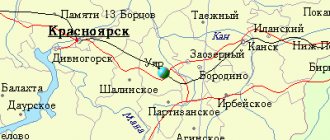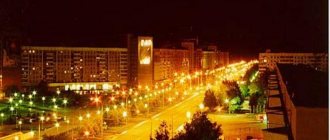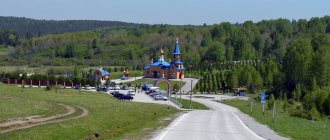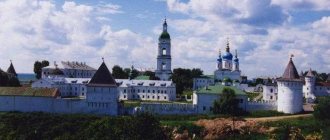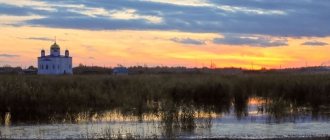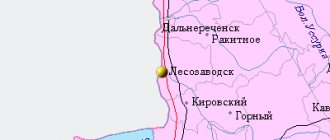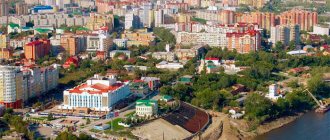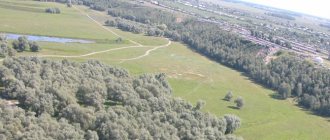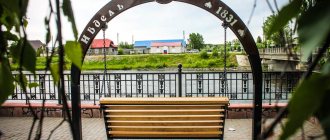City in Altai Krai, Russia
| Kamen-on-Obi Stone-on-Obi | |
| City [1] | |
| Historical building in Kamen-on-Obi | |
| Coat of arms | |
| Location of Kamen-on-Obi | |
| Kamen-on-Obi Location of Kamen-on-Obi Show map of Russia Kamen-on-Obi Kamen-on-Obi (Altai Territory) Show map of Altai Territory | |
| Coordinates: 53°47'N 81°20'E / 53.783°N Latitude 81.333°E / 53.783; 81.333 Coordinates: 53°47'N 81°20'E. / 53.783°N Latitude 81.333°E / 53.783; 81,333 | |
| A country | Russia |
| Federal subject | Altai region [1] |
| Administrative region | Kamensky district [1] |
| City of district significance | Kamen-on-Obi [2] |
| Based | 1751 [3] |
| City status from | 1915 |
| Height | 120 m (390 ft) |
| population size (2010 Census) [4] | |
| • General | 43 888 |
| Administrative status | |
| • Capital from | Kamensky district [1], city of district significance Kamen-on-Obi [1] |
| Municipal status | |
| • Municipal district | Kamensky municipal district [2] |
| • Urban village | Urban settlement Kamen-on-Obi [2] |
| • Capital from | Kamensky municipal district [2], urban settlement Kamen-on-Obi [2] |
| Timezone | UTC+7 (MSK+4[5]) |
| Postal code [6] | 658700, 658701, 658703–658707, 658709, 658739 |
| OKTMO ID | 01616101001 |
Kamen-on-Obi population
| 2010 Census | 43 888 [4] |
| 2002 Census | 44 375 [7] |
| 1989 Census | 42 483 [8] |
| 1979 Census | 40 018 [9] |
Stone-on-Obi
(Russian: Ка́н-на
-Оти́
), known before 1933 as
Kamen
(Kamen), is a city in Altai Krai, Russia, located on the left bank of the Ob River 208 kilometers (129 mi) northwest of Barnaul, then administrative center in the region. As of the 2010 census, its population was 43,888. [4]
Administrative and municipal status[edit]
As part of the administrative divisions, Kamen-on-Obi serves as the administrative center of Kamensky District. [1] As an administrative division, together with one rural settlement (Plotinnaya station) it is part of the Kamensky district as the city of district significance of Kamen-na-Obi
.
[2] As a municipal division, the city of district significance of Kamen-na-Obi is included in the Kamensky municipal district in the Kamen-na-Obi urban settlement
. [2]
As an administrative division, until September 2015, Kamen-na-Obi and Plotinnaya were separately included in the city of regional significance of Kamen-na-Obi
- an administrative unit with a status equal to that of districts.
[10] The city of regional significance Kamen-on-Obi as a municipal entity became part of the urban district of Kamen-on-Obi
. [11] The status of both units was changed in September 2015, when the city of regional significance was demoted to the level of a city of district significance and subordinated to the Kamensky district, and the city okrug was subordinated to an urban settlement in the Kamensky municipal district. [12]
Religion
In the list of peasants by church parishes of 1751, the village of Kamen is assigned to the parish of the Chinggis Church [6]. In 1886, an independent Kamensky parish was formed with a wooden church in honor of the Epiphany of the Lord (rebuilt in stone at the beginning of the 20th century), which was under the jurisdiction of the Tomsk department. At the Kamenskaya gymnasium there was a house church in the name of the martyrs Adrian and Natalia. In 1916, the Archangel Michael Church was consecrated. In 1923 - 1924, the renovationist Archbishop of Biysk Alexander (Avdentov) served in one of the churches of the city. All churches in the city were closed by the end of the 1930s.
In the 1950s, parish life was revived in the city. In 1979, Archbishop of Novosibirsk and Barnaul Gideon (Dokukin) consecrated the Intercession Church, built by parishioners. [7]
Since 1994 - as part of the revived Barnaul diocese, the center of the Kamensk deanery. In 1997, a convent was founded at the Epiphany Church. In the early 2000s, a stone church was built in the name of St. Tikhon, Patriarch of All Russia.
Since May 5, 2015 it has been the second cathedral city of the Slavgorod diocese.
Monasteries
- Epiphany (female)
Temples
- Adrian and Natalia, gymnasium (inactive)
- Anthony of Pechersk, convent
- Epiphany, convent
- Michael the Archangel (inactive)
- Panteleimon the Healer, hospital chapel
- Protection of the Blessed Virgin Mary
- Tikhon, Patriarch of All-Russia
Links[edit]
Notes[edit]
- ^ abcdef Law No. 28-ZS
- ^ abcdefg Law No. 41-ZS
- https://altlib.ru/files/text/k2011/37.pdf
- ^ abc Federal State Statistics Service (2011). “All-Russian Population Census 2010. Volume 1" [All-Russian Population Census 2010, vol. 1]. All-Russian Population Census 2010 [All-Russian Population Census 2010]
. Federal State Statistics Service. - "On the Calculation of Time". Official Internet portal of legal information
. June 3, 2011. Retrieved January 19, 2022. - Post office. Information and computing center of OASU RPO. ( Post office
).
Search for postal service objects ( postal Search for objects
) (in Russian) - ↑
Federal State Statistics Service of Russia (May 21, 2004).
“The population of Russia, the constituent entities of the Russian Federation as part of federal districts, urban settlements, settlements, settlements of 3 thousand or more people” [Population of Russia, its federal districts, federal districts, districts, urban settlements, rural settlements - administrative centers and rural settlements with a population of more than 3000] (XLS). All-Russian Population Census of 2002 [All-Russian Population Census of 2002]
. - “All-Union Population Census of 1989. The current population of union and autonomous republics, autonomous regions and districts, territories, negative phenomena, urban settlements and rural district centers” [All-Union Population Census of 1989: current population of union and autonomous republics, Autonomous regions and districts , territories, regions, districts, urban settlements, villages performing the functions of district administrative centers. All-Union Population Census of 1989 [All-Union Population Census of 1989]
.
Institute of Demography of the National Research University: Higher School of Economics [Institute of Demography of the National Research University: Higher School of Economics]. 1989 - via Demoscope Weekly
. - “All-Union Population Census of 1979. National composition of the population by regions of Russia” [All-Union Population Census of 1979. Ethnic composition of the population by regions of Russia] (XLS). All-Union Population Census of 1979 [All-Union Population Census of 1979]
.
1979 - via Demoscope Weekly
(website of the Institute of Demography of the State University - Higher School of Economics. - Law No. 28-ZS, as amended until September 2, 2015.
- Law No. 114-ZS
- Law No. 70-ZS
Map
| Kamen-on-Obi: maps |
Kamen-on-Obi: photo from space (Google Maps) Kamen-on-Obi: photo from space (Microsoft Virtual Earth)
| Stone-on-Obi. Nearest cities. Distances in km. on the map (in brackets along roads) + direction. Using the hyperlink in the distance , you can get the route (information courtesy of the AutoTransInfo website) | |||
| 1 | Krutikha | 20 (24) | NW |
| 2 | Tyumantsevo | 53 (55) | YU |
| 3 | Suzun (Novosibirsk region) | 64 (384) | IN |
| 4 | Pankrushikha | 64 (85) | Z |
| 5 | Baevo | 70 (82) | SW |
| 6 | Ordynskoye (Novosibirsk region) | 72 (97) | NE |
| 7 | Kochki (Novosibirsk region) | 80 (195) | NW |
| 8 | Shelaboliha | 94 (110) | SE |
| 9 | Verkh-Suetka | 101 (112) | SW |
| 10 | Rebrikha | 105 (189) | SE |
| 11 | Zavyalovo | 110 (139) | YU |
| 12 | Swags | 118 (142) | Z |
| 13 | Pavlovsk | 121 (138) | SE |
| 14 | Mamontovo | 123 (120) | YU |
a brief description of
Located in the Pre-Altai steppe, on the river. Ob (Novosibirsk reservoir), 208 km northwest of Barnaul. Pier. Railway station.
Territory (sq. km): 49
Information about the city of Kamen-on-Obi on the Russian Wikipedia site
Historical sketch
The village of Kamen was founded in 1751 on the site where the Ob cut a channel through a spur of the Salair Ridge. Similar rocky tracts along the banks of rivers are often referred to as stone, which led to the appearance of the name of the village. Data about the founding of the city in 1670 were found to be erroneous.
In 1915, this village and the neighboring villages that actually merged with it were transformed into the city of Kamen. In 1925 it was reorganized into a city for the second time. In 1933 the city was renamed Kamen-on-Obi.
Economy
The leading industry is the food processing industry: meat processing plants, butter and cheese factories, distilleries, fish and bakery factories, food processing plants, poultry farms, and elevators.
Factories: metal products, mechanical repair, film-mechanical. Weaving, furniture, knitting and clothing factories. Production of building materials: factories - reinforced concrete products, brick, crushed stone.
In the Kamensky region, wheat, rye, oats, barley, peas, corn, buckwheat, sunflower, flax, etc. are grown. Meat and dairy cattle breeding, pig breeding.
Deposits of limestone, clay, sand, etc.
Culture, science, education
Museum of Local Lore (founded 1920). Art Gallery.
Film director I.A. was born in Kamen-on-Obi. Pyryev.
Universities of the city
Branch of Altai State University in Kamen-on-Obi
658700, Altai Territory, Kamensky district, Kamen-on-Obi, st. Pushkina, 14
Museums, galleries, exhibition halls
Kamensky Museum of Local Lore 658710, Altai Territory, Kamensky district, Kamen-on-Obi, Lenin Ave., 49 Phone(s): (38584) 21-117
Architecture, sights
The historical center of the city formed along the left bank of the Ob and was formed by the former Main Street (length about 3 km). The buildings include buildings from the late 19th and early 20th centuries. incl. Intercession Cathedral, former trading houses of Vinokurov and Khomutov.
In 1929, a granary was built in this part of the city, which received the name “Mastodon” for its bizarre silhouette. In the mid-1990s, it was seriously damaged by fire and was destroyed.
The city's layout had developed by the end of the 1920s: square blocks with streets running from southwest to northeast and from southeast to northwest.
| Population by year (thousands of inhabitants) | |||||||
| 1926 | 22.9 | 1992 | 43.3 | 2007 | 44.9 | 2016 | 41.8 |
| 1931 | 22.8 | 1996 | 44.8 | 2008 | 44.6 | 2017 | 41.3 |
| 1939 | 25.0 | 1998 | 43.3 | 2010 | 44.0 | 2018 | 40.8 |
| 1959 | 30.1 | 2000 | 43.2 | 2011 | 43.9 | 2019 | 40.6 |
| 1967 | 35 | 2001 | 43.6 | 2012 | 43.2 | 2020 | 40.5 |
| 1970 | 35.6 | 2003 | 44.4 | 2013 | 42.8 | 2021 | 40.3 |
| 1979 | 40.0 | 2005 | 45.3 | 2014 | 42.2 | ||
| 1989 | 42.5 | 2006 | 45.1 | 2015 | 41.9 | ||
Attractions
The main attractions are located on Lenin Street (formerly Main Street), which runs parallel to the Ob River for more than 3 km from Bazarnaya Square (currently home to the Spartak stadium) and to the port facilities.
- At the beginning of the street on a hill is the Epiphany Church (consecrated in 1902). The construction and arrangement of a stone church on the site of a dilapidated wooden one was carried out with donations from merchants Vinokurov, Zorin, Pudovkin, Simonin and Chaigin. The temple was based on an exemplary design in the pseudo-Russian style, with elements of ancient Russian religious architecture. In the 1930s, the crosses were removed from the temple, and a distillery was located inside. Currently, the plant's facilities have been transferred to another building - the temple building is being restored.
- In the building of the mansion of the merchant A.S. Khomutov (Lenin St., 18), next to the church, there was a medical school until 2007. This is a two-story brick house with a basement. The façade is decorated with white brick ornaments. The building is made in eclectic forms using elements of classicism. In connection with the start of construction in 2006 of the second railway bridge across the Ob, the school moved to a new building on the street. Pushkin.
- At house number 49 on Lenin Street there is the Kamensk State Museum of Local Lore. The city museum is located in the neoclassical mansion of the Vinokurov merchants (“Vinokurovsky House”). In 1942 - 1944 the building housed the evacuated Voronezh Agricultural Institute. Since May 2008, the Vinokurov and Sons trading house has been protected by the state as an architectural monument of federal significance.
- On the corner of Lenin Street (No. 66) and Komsomolskaya there is a beautiful two-story brick house of the merchant Pudovkin with a rounded corner shape. Its architecture contains elements of early century Art Nouveau. On the second floor there are twisted wrought iron balconies and decorative elements. At the address st. Lenina, 78 is the main building of the estate of the merchant Zorin (now the Office of the Pension Fund of the Russian Federation for Kamen-on-Obi and Kamensky District), also built in the eclectic style of the early 20th century. It is also a two-story brick building with a cubic shape. On the second floor of the central facade there is a beautiful wrought-iron balcony; the windows are decorated with white brick ornaments.
- Among the modern attractions, one can note the embankment, stretching along the river bank from the street. Krasnoarmeyskaya to the city park.
Mansion of the merchant A.S. Khomutov (until 2007, the building housed the Kamensk Medical School) The main building of the estate of the merchant Zorin (now the Administration of the Pension Fund of the Russian Federation for Kamen-on-Obi and the Kamensky district) House of the merchant Pudovkin (on the 1st floor of the building the “Volna” cafe is located) Mansion of the Vinokurov merchants (the 2nd floor of the building is occupied by the Kamensky Local History Museum) Source
Sources
- https://www.altairegion22.ru/territory/regions/kamen-na-obi/
- https://turistka.ru/altai/info.php?ob=1059
- https://vyurchenko.ru/altajskij-kraj/gorod-kamen-na-obi.html
- https://dic.academic.ru/dic.nsf/ruwiki/53692
- https://mysmsbox.ru/city-code/%D0%90%D0%BB%D1%82%D0%B0%D0%B9%D1%81%D0%BA%D0%B8%D0%B9%20 %D0%BA%D1%80%D0%B0%D0%B9/%D0%9A%D0%B0%D0%BC%D0%B5%D0%BD%D1%8C-%D0%BD%D0%B0 -%D0%9E%D0%B1%D0%B8
- https://tropki.ru/rossiya/altayskiy-kray/kamen-na-obi
Story
The founding date of the settlement is considered to be 1751. Previously, the founding date was considered to be 1670, however, in 2000, a scientific study was carried out, during which it was found that the founding date of the settlement was 1751. The settlement was formed by the merger of several small villages. The name of the village has a literal explanation: the village was named so because of the outcropping of rock from a spur of the Salair Ridge to the surface of the earth.
The favorable geographical location and the presence of a pier determined the economic development of the village. By the end of the 19th century, the village of Kamen was a large trading village in the Barnaul district of the Tomsk province. Local merchants established economic trade ties with Russian and European enterprises. The main commodity sold at that time was grain. The largest suppliers of wheat were local merchants Vinokurov and Falkov. In 1912, in terms of trade turnover, the village of Kamen ranked 4th in the Tomsk province, after Tomsk, Novonikolaevsk and Barnaul.
After the construction of the Trans-Siberian Railway in Novonikolaevsk (now Novosibirsk), the importance of water transport decreased and the economic role of the village in the region began to gradually fade away. However, railway transport did not develop so quickly and the village remained a major grain transshipment point. In 1930, according to the project and under the leadership of Yu. V. Kondratyuk, a unique structure “Mastodon” was built - the largest wooden granary in the world with a capacity of 13,000 tons. This structure was built without a single nail. In the mid-1990s, Mastodon was seriously damaged during a major fire and was subsequently destroyed.
On May 10 (23), 1915, the village of Kamen was given the status of a city. Since April 10, 1933, the city has had its modern name - Kamen-on-Obi.
During the Great Patriotic War, some enterprises and institutions were evacuated to Kamen-on-Ob. One of these was the Barnaul Pedagogical Institute, on the basis of which the Kamensk Pedagogical School was organized.
In the post-war years, Kamen developed as an agricultural center in the region. Thus, in the early 1960s, the Central Siberian Mainline of the West Siberian Railway was put into operation, which made it possible to establish stable transport links with major cities of Siberia. From 1973 to 1983, the Kulunda main canal was built, intended to irrigate agricultural lands in the steppe zone of the Altai Territory. In 1977, the head pumping station and the head section, starting in Kamen-on-Obi, were put into operation. In 1979, construction of the largest elevator beyond the Urals was completed.
Pre-revolutionary period
The founding date of the settlement is considered to be 1751. Previously, the founding date was considered to be 1670, however, in 2000, a scientific study was carried out, during which it was found that the founding date of the settlement was 1751. The settlement was formed by the merger of several small villages. The name of the village has a literal explanation: the village was named so because of the outcropping of rock from a spur of the Salair Ridge to the surface of the earth.
The favorable geographical location and the presence of a pier determined the economic development of the village. By the end of the 19th century, the village of Kamen was a large trading village in the Barnaul district of the Tomsk province, and became (until 1925) the center of the Kamensk volost. Local merchants established economic trade ties with Russian and European enterprises. The main commodity sold at that time was grain. The largest suppliers of wheat were local merchants Vinokurov and Falkov. In 1912, in terms of trade turnover, the village of Kamen ranked 4th in the Tomsk province, after Tomsk, Novonikolaevsk and Barnaul. There was also a handicraft industry in the city and county: tanneries, oil churns, mills and other small enterprises for processing agricultural raw materials. In the district there were about 200 butter-making artels, many private butter factories and grain storage centers. The labor force, represented by landless peasant migrants from Central Russia, was unusually cheap.
After the construction of the Trans-Siberian Railway in Novonikolaevsk (now Novosibirsk), the importance of water transport decreased and the economic role of the village in the region began to gradually fade away. However, railway transport did not develop so quickly and the village remained a major grain transshipment point. On May 10 (23), 1915, the village of Kamen was given the status of a city; by 1917 there were 15 thousand inhabitants.
Stone during the October Revolution
A feature of the political development of the city in 1917 was the hegemony of the Bolsheviks, who were among the first in Siberia to form a party organization separate from the Mensheviks and took power in the city peacefully. Power passed to the Soviets at the end of December 1917. The Executive Committee of the Soviet adopted the name “district council of people’s people.” Ignatiy Vladimirovich Gromov (Mamonov) was elected chairman of the Kamensky District Council. After the establishment of Soviet power, the People's House was opened in the city, clubs were opened in the volost villages, and reading huts were opened in the villages. The council nationalized several houses of large landlords and turned them over to schools. In order to finance public education, as well as the fight against counter-revolution, an indemnity in the amount of 3 million rubles was imposed on the local bourgeoisie (of which they managed to collect about 2 million).
At the suggestion of the anarchists elected to the Council, the issue of creating the Kamensk district federal republic was discussed. Local anarchists wanted to achieve independence from the province so as not to supply food to the center.
In February - March 1918, a counter-revolutionary rebellion broke out in Kamen and its district, led by the head of the district police, former lieutenant Samoilov. The rebels killed Bolsheviks, Soviet activists, and destroyed Soviet institutions. Red Guard detachments from Barnaul and Novonikolaevsk arrived to eliminate the rebellion. The Barnaul detachment of Red Guard railwaymen, numbering up to 150 bayonets, was led by I. M. Tsaritsyn and M. A. Fomin. As a result, the rebellion was suppressed, moreover, Soviets appeared in those villages of the district where they had not previously existed.
By May 1918, Stone’s Red Guard detachment numbered about 300 fighters, but its main forces were sent to Transbaikalia against the gangs of Ataman Semyonov. By the time of the White Czech uprising, the Kamensk Bolsheviks were practically unarmed. On June 9, 1918, the city was taken without a fight by the White Guards, who arrived by ship from Novonikolaevsk. 8 Bolsheviks remained in the city to conduct underground work.
Since August 1919, Kamen actually became a front-line city. In the village of Ust-Mosikha, the Kreatyan uprising began, organized by a local teacher, Bolshevik A. N. Danilov. On August 29, 1919, the partisan detachment of Ignatius Gromov occupied the city for several hours. This action pursued not so much military as political goals: to show the increased power of pro-Bolshevik partisans. In the afternoon, the Whites returned to the city, supported by one and a half thousand Poles, with two steamships, two cannons and machine guns. The Red partisans and peasants retreated, capturing 400 rifles and looting warehouses with ammunition, uniforms, textiles and leather goods. The Reds freed about five hundred captured Hungarians, from whom a company of Red Magyars was formed under the command of Max Lamberg.
Soviet power in the city was restored on November 28, 1919 by partisan detachments and units of the regular Red Army that occupied Kamen.
Soviet period and our time
A complex grain dryer located next to the Mastodon granary.
In 1930, according to the project and under the leadership of Yu. V. Kondratyuk, a unique structure “Mastodon” was built - the largest wooden granary in the world with a capacity of 13,000 tons. This structure was built without a single nail. In the mid-1990s, Mastodon was seriously damaged during a major fire and was subsequently destroyed.
Since April 10, 1933, the city has had its modern name - Kamen-on-Obi.
During the Great Patriotic War, some enterprises and institutions were evacuated to Kamen-on-Ob: in particular, the Voronezh Agricultural Institute and the Barnaul Pedagogical Institute.
In the post-war years, Kamen developed as an agricultural center in the region. Thus, in the early 1960s, the Central Siberian Mainline of the West Siberian Railway was put into operation, which made it possible to establish stable transport links with major cities of Siberia. From 1973 to 1983, the Kulunda main canal was built, intended to irrigate agricultural lands in the steppe zone of the Altai Territory. In 1977, the head pumping station and the head section, starting in Kamen-on-Obi, were put into operation. In 1979, construction of the largest elevator beyond the Urals was completed.
Until 2015 it was a city of regional significance. In 2015 it was transformed into a city of regional significance.
Population[ | ]
| Population | |||||||
| 1959[9] | 1996[10] | 1997[10] | 1998[10] | 1999[10] | 2000[10] | 2001[10] | 2002[10] |
| 30 135 | ↗45 039 | ↘44 556 | ↘44 501 | ↗44 600 | ↘44 300 | ↗44 700 | ↗45 300 |
| 2003[10] | 2004[10] | 2005[10] | 2006[10] | 2007[10] | 2008[10] | 2009[10] | 2010[11] |
| ↗45 498 | ↗46 041 | ↗46 162 | ↘45 941 | ↘45 677 | ↘45 357 | ↘45 124 | ↘44 648 |
| 2011[10] | 2012[10] | 2013[12] | 2014[13] | 2015[14] | 2016[15] | 2017[16] | 2018[17] |
| ↘44 601 | ↘43 988 | ↘43 577 | ↘42 947 | ↘42 648 | ↘42 533 | ↘42 045 | ↘41 509 |
| 2019[18] | 2020[19] | 2021[20] | |||||
| ↘41 355 | ↘41 164 | ↘40 965 | |||||
Population as of January 1, 2022 was: 41,355.
